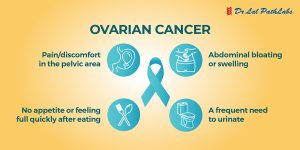Lymphoma: Types and Risk Factors
What is Lymphoma?
Lymphoma is a form of cancer that originates in your lymphocytes and affects the lymphatic system. A lymphocyte is a white blood cell crucial for defending your body against infections and diseases. In the case of lymphoma, these lymphocytes mutate and lose their controlled growth mechanisms, multiplying at an abnormal rate or surviving longer than they should. This unregulated cell behaviour stems from genetic alterations that disturb the usual checks and balances in cell growth and lifespan.
What is the Lymphatic System?
The lymphatic system is a critical part of the body’s defence mechanism. It is also the primary area affected by lymphoma. The lymphatic system comprises your lymph nodes, spleen, thymus gland, and bone marrow. It serves various functions, including fighting off infections, regulating fluid levels in your body, and helping your bloodstream absorb fats and fat-soluble vitamins.
How does Lymphoma affect the Lymphatic System?
When lymphoma takes hold, it disrupts the normal functioning of your lymphatic system. The mutated lymphocytes become ineffective at fighting infections and can accumulate uncontrollably. This often results in swelling of your lymph nodes and other lymphatic organs like the spleen and liver. The mutation allows these aberrant cells to proliferate and survive, disrupting your immune system and posing a significant health risk. This is why recognising the signs and symptoms of lymphoma is crucial for timely intervention.
Types of Lymphoma
Lymphoma is primarily classified into two main categories:
Hodgkin’s Lymphoma
Hodgkin’s Lymphoma, previously known as Hodgkin’s disease, arises in the lymphoma glands of the lymphatic system. While relatively rare, it tends to be the predominant form of lymphoma among young adults. It occurs due to acquired genetic mutations in specific lymphocytes.
The characteristic cell type associated with Hodgkin’s Lymphoma is the Reed-Sternberg cell, which is absent in other types of lymphoma. Despite its seriousness, Hodgkin Lymphoma generally has a high cure rate, mainly if diagnosed and treated early.
Types of Hodgkin’s Lymphoma
- Nodular Sclerosing Hodgkin’s Lymphoma: Most frequently seen in young adults, especially women, this mainly manifests as cancer lymph nodes in the neck and central chest region.
- Mixed Cellularity Hodgkin’s Lymphoma: Generally occurs in people around their 60s and impacts lymph nodes containing diverse cells, including Reed-Sternberg cells.
- Lymphocyte-rich Classic Hodgkin’s Lymphoma: Makes up about 6% of Hodgkin Lymphoma cases and has more abundant normal lymphocytes and Reed-Sternberg cells. It’s more prevalent among men.
- Lymphocyte Depleted Hodgkin’s Lymphoma: Rare and primarily observed in older people or those with HIV/AIDS. Normal cells in the lymph nodes are replaced with abnormal ones.
Non-Hodgkin Lymphoma
Unlike Hodgkin lymphoma, non-Hodgkin lymphoma (NHL) is not characterised by Reed-Sternberg cells and can originate from B or T lymphocytes. This is a diverse and complex category of lymphoma with over 70 subtypes. Among these subtypes, some types of non-Hodgkin lymphoma are aggressive, whereas others are indolent. The most common subtypes include:
Aggressive Non-Hodgkin Lymphomas
- Diffuse Large B-cell Lymphoma (DLBCL): The most common NHL, comprising about 30% of all cases. Known for rapid growth, it may originate in lymph nodes or other organs.
- Mantle Cell Lymphoma: Occurs primarily in older males and represents around 5-7% of NHL cases. It originates from mutated B cells in the mantle zone of lymph nodes.
- Lymphoblastic Lymphoma: Features immature lymphoblasts closely related to acute lymphoblastic leukaemia.
- Burkitt Lymphoma: Extremely fast-growing but responds exceptionally well to intensive chemotherapy.
- Peripheral T-cell Lymphoma (PTCL): Accounts for approximately 6% of NHL cases and predominantly impacts people over 60. It affects lymphoid tissues like the spleen, skin, and gastrointestinal tract.
- Angioimmunoblastic T-cell Lymphoma (AITL): It is typically seen in people over 40, with symptoms often mimicking autoimmune disorders.
Indolent Non-Hodgkin Lymphomas
- Follicular Lymphoma: Primarily affects lymph nodes, bone marrow, and other organs and is the second most common type of NHL.
- Chronic Lymphocytic Leukaemia (CLL)/Small Lymphocytic Lymphoma (SLL): The difference lies in the location of abnormal B cells. CLL is in the bloodstream, and SLL is in tissues and lymph nodes.
- Marginal Zone Lymphoma: Features three subtypes—nodal, splenic, and extranodal—that vary by the affected location.
- Waldenström Macroglobulinemia: Originates from mutated B cells that produce a unique antibody known as IgM.
- Cutaneous T-cell Lymphoma: A rare lymphoma affecting the skin, with Mycosis fungoides and Sézary syndrome as notable examples.
Risk Factors of Lymphoma
While the exact causes of lymphoma are unknown, there are some risk factors associated with it, such as:
- Viral and Bacterial Infections: Certain infections like HIV, Epstein-Barr virus, and Helicobacter pylori can elevate your risk of developing lymphoma.
- Age and Gender: Both age and gender play a role; lymphoma is commonly diagnosed in people over 55, and males are slightly more prone to it than females.
- Immune System: A weakened immune system, whether due to conditions like HIV/AIDS or treatments like immunosuppressant drugs for organ transplants, increases lymphoma risk.
- Autoimmune Disorders: Autoimmune diseases such as Sjögren syndrome or rheumatoid arthritis increase the risk of lymphoma.
- Family History: A family history of lymphoma, although only slightly risky, still contributes to the overall risk profile.
- Previous Treatments and Exposures: Previous cancer treatments, chemical exposures like pesticides, and even certain vaccinations can impact your risk of developing lymphoma.
- Lifestyle and other factors: Other factors like having breast implants, exposure to ionising radiation, and potentially being overweight or consuming a fatty diet may also slightly elevate lymphoma risk.
Understanding the complexities of lymphoma, the various types, risk factors, and lymphoma cancer symptoms is crucial for early diagnosis and treatment. Watch out for risk factors and seek timely medical consultations for better health outcomes.















